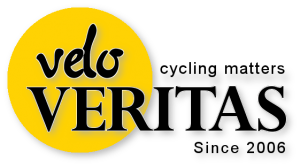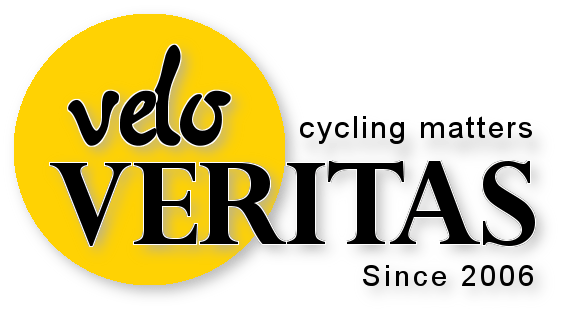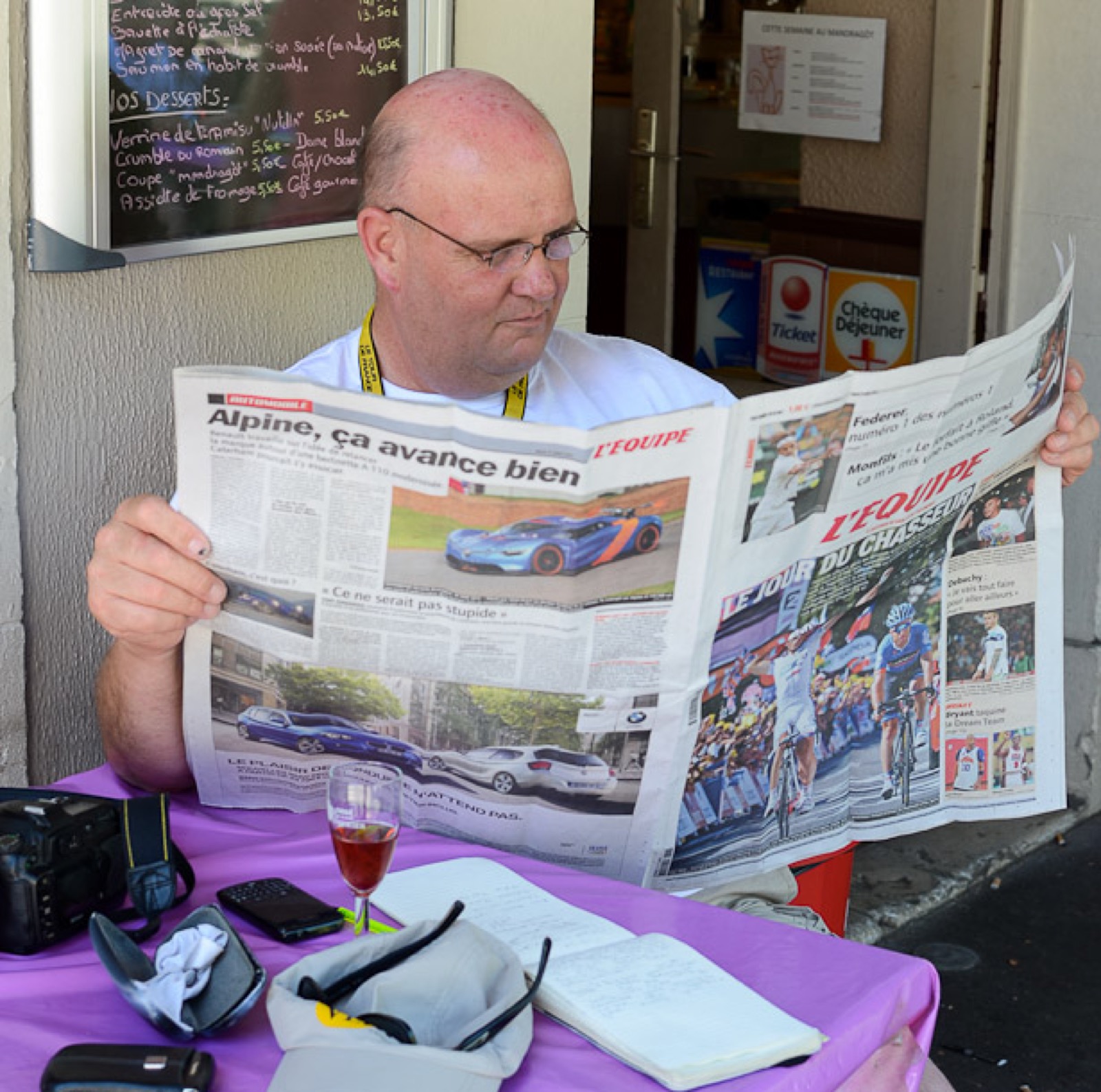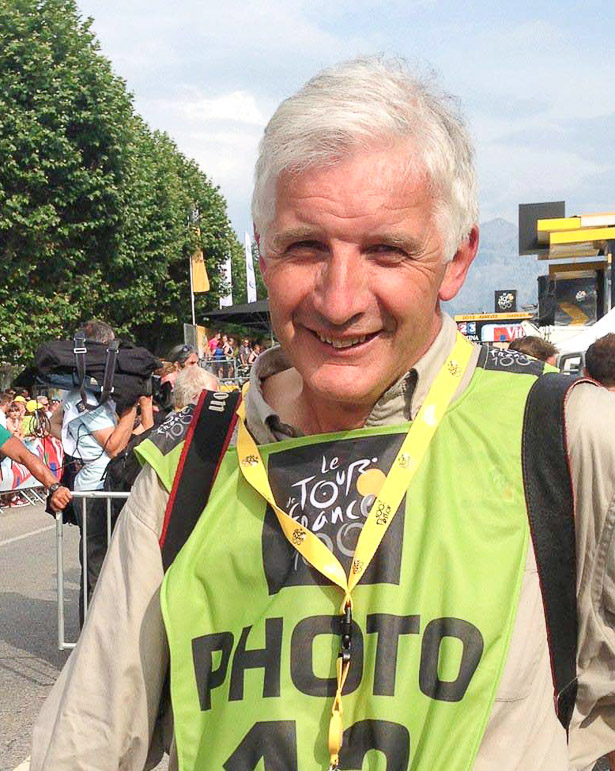
John Pierce is one of the world’s great sports photographers, he’s a friend of VeloVeritas and in our site’s best tradition, the man can RANT about the sport he’s been a part of for 50 years.
John, thank you for speaking to us – and am I right in saying you had a picture voted the ‘Best Cycling Photograph, Ever?’
“I think you refer to the Hinault sprint picture, Tour de France 1981.
“At the end of 1989 it was credited as being the ‘Action Sports Picture of the Decade’. The picture shows Hinault who was the current World Road Race Champion and the race leader wearing Yellow at the Tour de France.
“It was taken at a stage finish in Belgium (Zolder), due to unfriendly Belgian police at that time I chose to work in advance of the finish line, about 150m from the line. My intention was to shoot Kelly (Splendor) from the side, sprinting.
“I was staying at Herman Nys (Kelly’s long term host in Belgium) house, as a guest of Kelly. So, the intention was obvious and he had said he wanted to win for ‘Herman and Elise‘ – well, I waited and waited, looking for Kelly, but couldn’t identify him. Then I saw the Yellow jersey of Hinault, and also the Green of Maertens – so I panned with the large camera – one shot is all you get. However the Splendor rider was not Kelly but Guido Van Caster, with Planckaert (both Splendor).
“Hinault was trying to get past and all three had their eyes fixed ahead.
“It is, for sure, a great picture, but not one that has ever excited me; it disappointed me because Kelly did not sprint that day, and I really wanted a side shot of Kelly sprinting. (I got that the following year, when he was himself in Green).
“The Hinault picture has probably been published more times than any other photo in cycling, except perhaps the ‘Fausto Coppi – Izoard 1949’ which is a stand alone iconic portrait of a champion, legend even.”
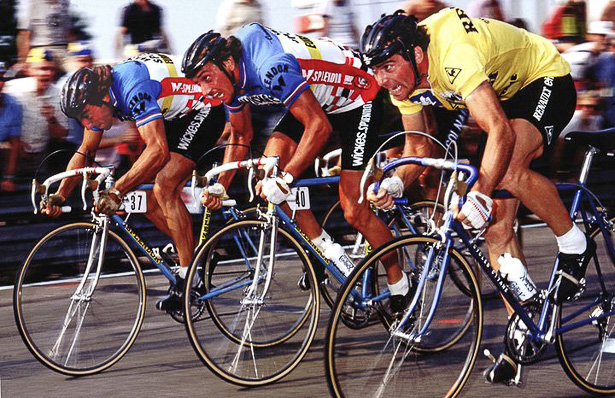
Photo©John Pierce/PhotoSport International UK USA Asia
You raced as a ‘Young Un’, how did you do?
“I was second in the West of England schoolboy champs, Phil Edwards won. I won 24 races, as a senior – I won a race in Chippenham, lapping all but five of the field that included pros Steve Taylor, Paul Baker, Graham Moore, and Phil Edwards. In that race I started fast, having ridden the 23 miles to the event. I was soon joined by Edwards, we lapped the field, but it was dangerous; the road surface was pan flat, on a prefab estate that was being demolished, so it was a bit dusty. I took a couple of primes and Edwards shouted; ‘let’s share them,’ so we were in for the long run. Two laps to go I was setting myself up for the sprint, going pretty fast.
“We trained together so I was pretty confident, then Edwards jumped me from behind but he fell part way around the next lap. I caught Steve Taylor who was fifth in the race as he rounded the last corner, Edwards was second.”
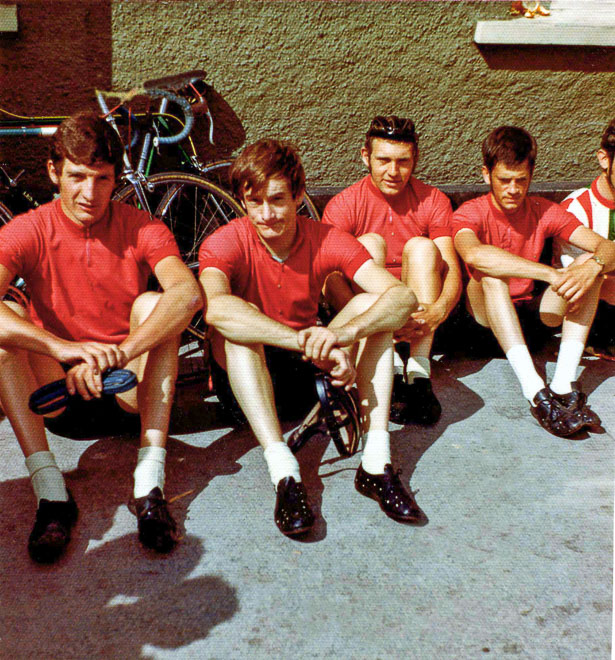
Photo©John Pierce/PhotoSport International UK USA Asia
“I held a local time trial record over 10.7 miles with two climbs in 23 minutes dead.
“I never really rode the track, but had several nights at Maindy Stadium (Cardiff) on pro Derek Green’s Condor Track bike, I won a couple of events like the Devil and I took the flying lap record.
“On the road I could sprint and fast, on my day I could climb, but I suffered from asthma so was very unpredictable (for me).”
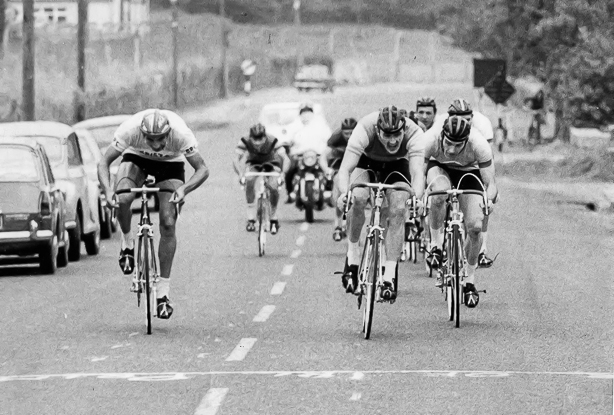
Photo©John Pierce/PhotoSport International UK USA Asia
“I rode the Tour of Ireland five times and finished; I won a few primes there which earned me the nickname ‘prime-hunter’.
“It was there that I became friends with some of Ireland’s top riders, mainly Pat McQuaid as we are the same age and build on the bike, similar riding abilities.
“I remained with the Raleigh Dunlop Tour of Ireland for many years, competing five times over six years; I was later invited to bring my own team, representing the West of England for a similar number of years.
“Then I became the event photographer, working for TI Raleigh Ireland.”
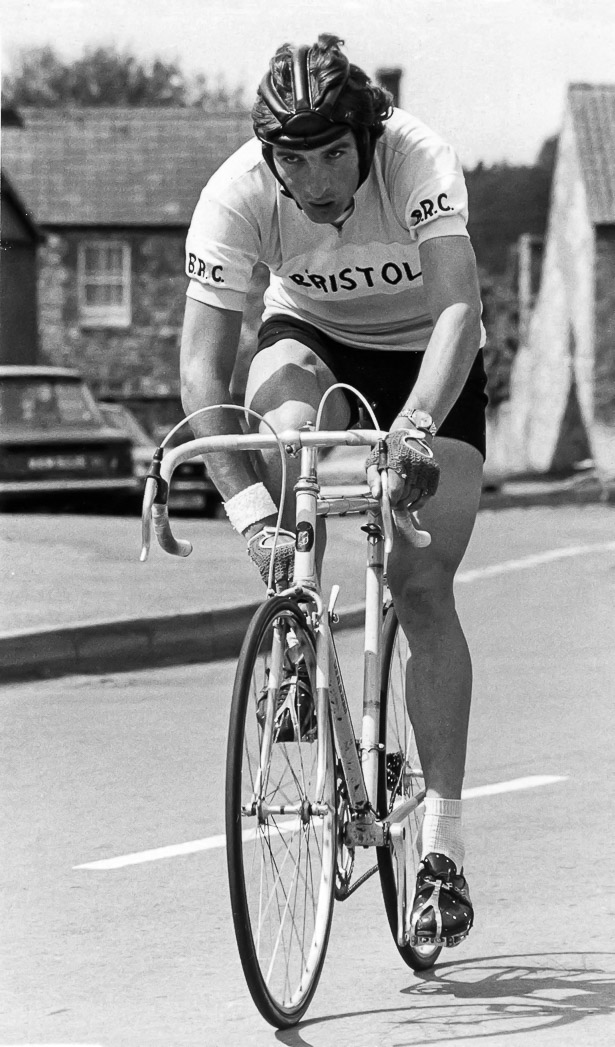
Photo©John Pierce/PhotoSport International UK USA Asia
You were behind the Manulife-Strada Team, tell us how that came to be.
“The team was a follow-on from organising teams for the Tour of Ireland. I would select riders suitable for the route of the tour from various clubs in the division. They would either ride for the West of England (sanctioned by division) or for my club, the Bristol Road Club, (sanctioned by the club). In that way over several years I became a manager and knew the individual riders very well.
“In 1972 David Trodd as a customer came into the camera shop, The London Camera Exchange in Bristol where I was manager. Sometime later he asked if I wanted to buy any life insurance and also if I smoked? I answered ‘no’ to both questions – however, I knew a lot of people who did not smoke, and I had an idea.
“Manulife were the only Life Insurance Company doing a non-smoking policy. It was cheaper and paid out better; so it didn’t take an ‘Einstein’ to put the team together with the new sponsor. We called it ‘Manulife Racing’ which had a ring to it like ‘Martini Racing’. We had super slick jersey design and I was very selective with members. The criteria was that they were all walking, talking adverts for a UK based Canadian owned global company.
“We were lucky, every single rider pulled their weight and I chose ‘horses for courses’ and we won pretty much everything. When one of our riders won he received a bonus and the club itself received the same bonus. This was in addition to the annual expenditure budget. However, when the club, and its team reached 75 wins a year the sponsor Manulife Insurance Bristol office, called me in with a problem. They wanted to continue sponsorship, but could not afford it – how could we continue and justify the extra money?
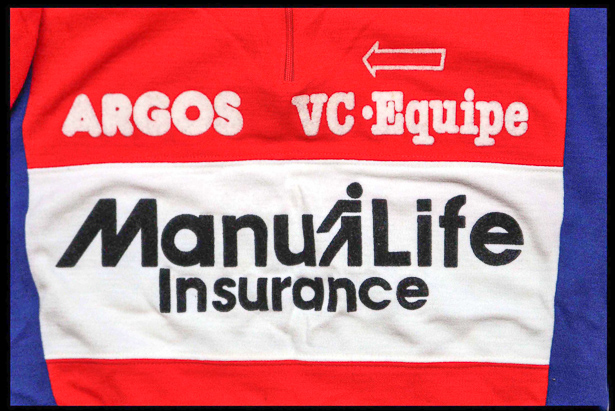
Photo©John Pierce/PhotoSport International UK USA Asia
“At the same time Phil Griffiths of GS Strada Lutz was talking about the Lutz family clothing company stepping down from their sponsorship with GS Strada. Similarly, Phil’s team had also outgrown their sponsor, and were looking for sponsors elsewhere.
“I then proposed to our local Manulife that we could have an increased budget locally, if we were able to get the 23 UK Manulife Offices to sponsor VC Equipe-Manulife and the GS Strada-Manulife club. This was all done through myself with annual budgets for both clubs. Three years later GS Strada went for a direct meeting at Manulife, with a plan to increase their sponsorship and cut out VC Equipe from the equation.
“I arrived a week later at the due date, without knowing GS Strada had already proposed their budget. Manulife did not like it, and thus did not renew their sponsorship of either club. Without GS Strada the budget for VC Equipe was still too large for the Manulife Bristol branch.
“However VC Equipe had enough in the bank to continue for another two years and the club totalled almost 500 victories, 13 x Division Titles 1978 through to 1984, and three National Championships The best part is that all riders-members are still friends today, which is testament in itself.”
How did you get into race photography?
“When I was 13 years of age I won some money on the Premium Bonds, my mother had bought for me with birthday money. So with that I brought a bike to ride to school, it was a fancy racing style bike.
“School was the other side of Bristol, about 13 miles, and I would ride to school, that’s where I met Graham Moore and some others who were already ‘racing’.
“When I was 15-16 years-old I got quite ill on occasions with asthma and couldn’t race but with a recent family break up and move across Bristol my only friends were at my new school. As chance would have it I won again on the premium bonds – £25 worth, in today’s money that’s around £500.
“So I bought a camera and went to watch my school friends racing. The camera was an Empire Junior 120mm roll film camera with variable shutter speeds, bought from Woolworths. Mother chose it, being from a wealthy family she was a keen photographer in the 30’s and 40’s so knew a thing or two about cameras, film size and shutter speeds. I went with my school pals to Chrystal Palace to watch Tom Simpson in 1964, so that would have been my first photography of a professional race.”
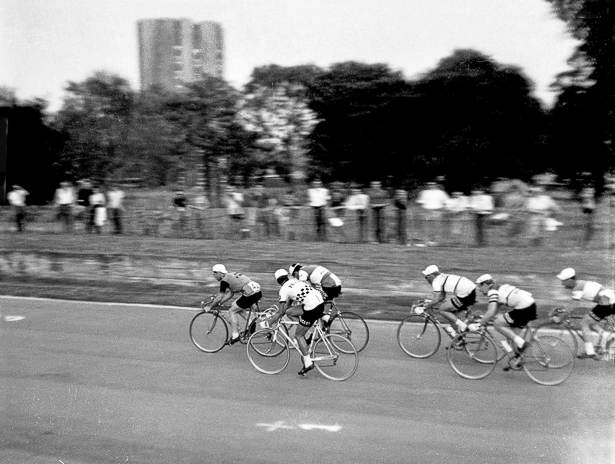
Photo©John Pierce/PhotoSport International UK USA Asia
“My father was a big motorcycle speedway fan, when I was very young we used to go the Knowle Speedway. About 10 years later armed with a camera I would attend the motorcycle speedway races at Eastville (where we lived) and was able to shoot some great pictures from the inside of the apex of the corner. I remember one time the bikes came really close and the ‘knob’ at the end of the clutch lever caught me as they passed.
“I also shot ice speed skating, some international events at the Bristol Ice Rink again from the inside of the track, on the apex of the corners. That same year I took some cycling shots that still survive today; the lads loved them and paid me what it cost because they wanted more pictures.
“The shots were unusual because they were taken from the side, most photographers shot from the front, but having been a rider, albeit as a schoolboy I knew it was important to ‘look in the reflection’ as you passed a shop window – that’s how and why I made pictures like the one of motor bike and Formula One legend Mike Hailwood during the Isle of Man 1967 he won three TT events there, including the 500cc. It was displayed in the Bromheads Camera Shop (Bristol) where I worked. I loved that picture.”
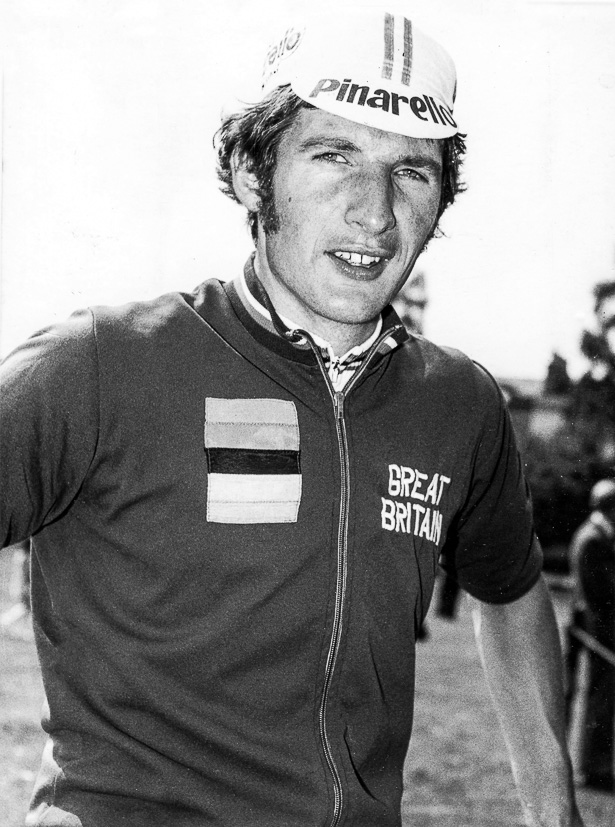
Photo©John Pierce/PhotoSport International UK USA Asia
“I met Ron Good a photographer from Wales at the local events; we quickly became friends rather than rivals. However, everything he tried to teach me went straight over my head! He was a Government or Council employee teaching at photography classes, while I was a ‘hands on’ type learning from results he was busy trying to tell me the different developers, and lines per millimetre.
“Ron was special, we never crossed at events, and I think it helped when I chose to go abroad for races. Ron always stayed local, Wales and West of England – he was the Milk Race official photographer for 28 of it’s 35 years.”
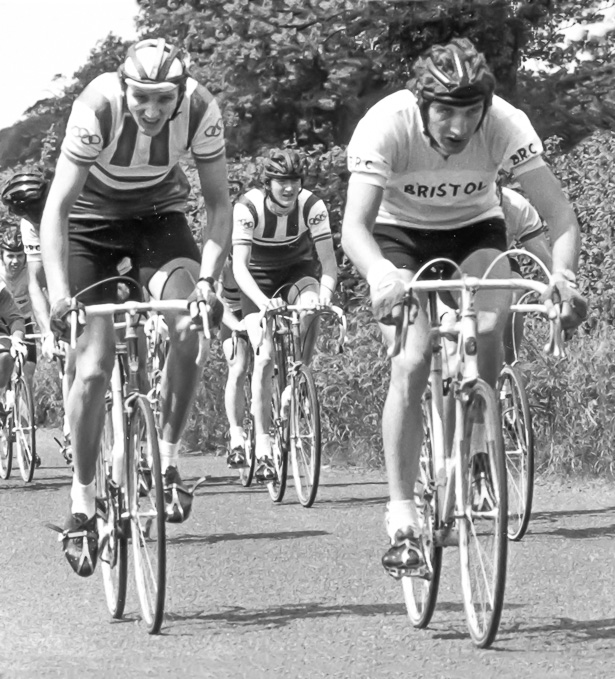
Photo©John Pierce/PhotoSport International UK USA Asia
“I got a job in a camera shop as I mentioned earlier… this worked well because I learned about cameras, films and the entire business. I had bought a 35mm camera a Zeiss Werra with a barrel wind shutter, it had a 750th of a second blade shutter, so I could use fill flash. I was one of the first to do so – along with Sergio Penazzo from Italy.
“I wanted to go to see Paris-Roubaix so I booked up a trip with Chequers Travel. In those days there was no RyanAir or EasyJet and few car rentals, not even credit cards – it was train and bike or an organised coach trip. So when I went over to Roubaix in April 1970 I took another second hand camera I had ‘bought in’ at the shop, a Microcord with a Ross Express Twin lens reflex, 120mm film.
“At the same time International Cycle Sport was launched by the late, great Jock Wadley, which coincided with the new E6 transparency film with could be processed in two hours. I knew this from the camera shop, so before I set off, I bought some of these new films, with the intent of processing quickly when I returned. Instead I sent the unprocessed films direct to the ICS magazine.”
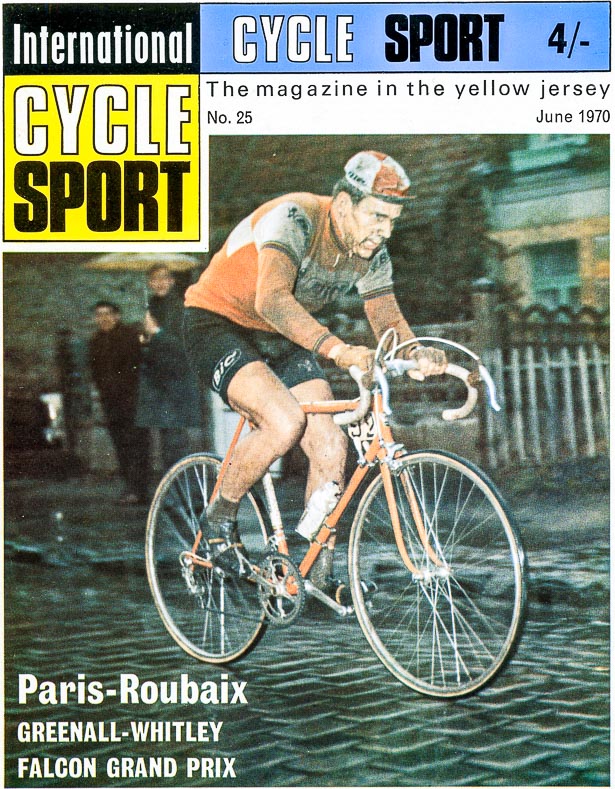
Photo©John Pierce/PhotoSport International UK USA Asia
“Two weeks later Paul Baker said ‘Hey! Did you see your picture in ICS ?’ I had ridden a few big races like the ICS Two day where we took first, third and the team with just three riders – Graham Moore won, Phil Edwards was third and completed the team. I thought Paul was talking about that race, but then I received the magazine in the mail and I had the front cover picture of Jan Janssen and inside a full page of Roger De Vlaeminck, plus a pretty big spread.
“It didn’t earn me so much money, but it paid for the trip, I was happy and planned to do it again. It was a great trip; it rained the whole weekend, perfect for Paris Roubaix – legend! I was young and I had been there and seen it, everyone else just read about it.
“The best part was they were reading stories illustrated with my photos, good ones, just like the ones from the French magazines, some say better.”
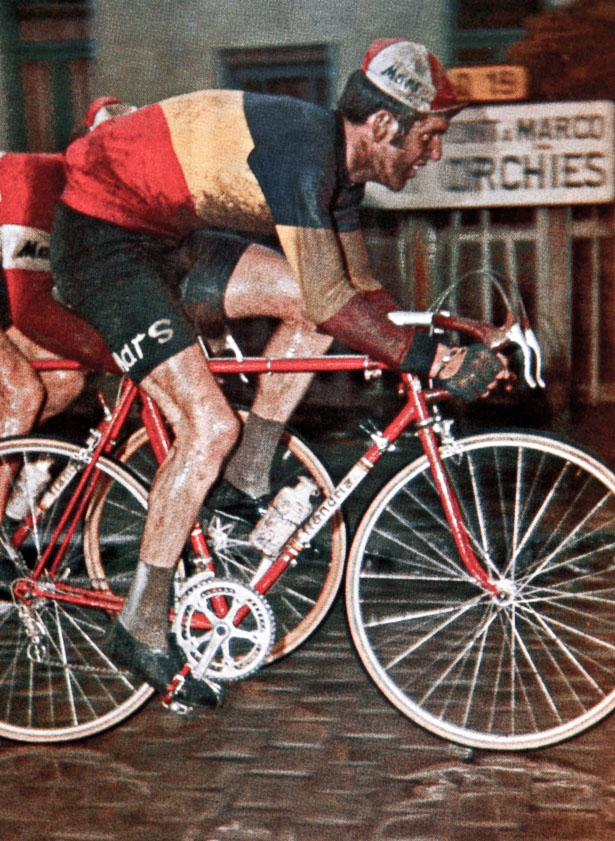
Photo©John Pierce/PhotoSport International UK USA Asia
“After racing in the Tour of Ireland, in the 70’s and then taking a few teams over there I was asked to work the event as the race photographer.
“I did this for almost ten years, through John Beatty the director of Raleigh Ireland, sponsors of the nine day event. I would drive a van over there and with a power extension lead, I would process and print the photos in the blacked out van and a motorcycle would drive prints to Dublin for the next days’ newspaper. Then, later overnight in the van I would print a selection for the organisation and riders.
“I worked many of the top UK races for Cycling Weekly and Pro News partnered by photographer John Coles. Then, after going to the Long Beach trade show in January 1985 I got the Tour of Texas race photography job. I did that for about 12 years too, but it was on the calendar at the same time as Paris Roubaix, so John Coles covered the French Classic.”
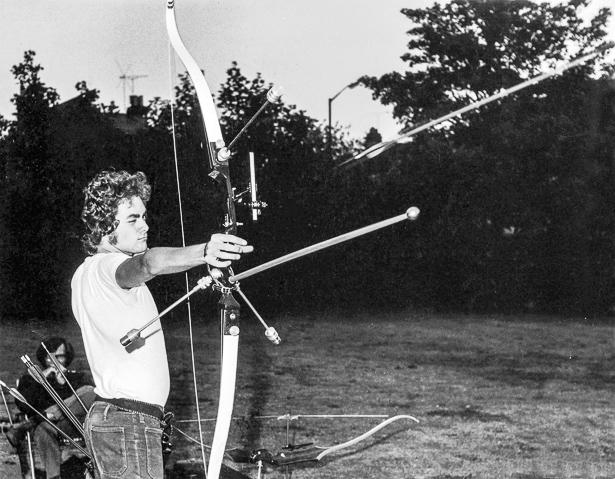
Photo©John Pierce/PhotoSport International UK USA Asia
“In America I was approached by Jim Safford from Marina Del Rey CA, and asked if he could assist me in the Tour of Texas. So whenever and wherever we worked for organisers we had a two man team, we never missed a finish or podium had one on the moto and one in the VIP working at start and finish. We always wore clothing that was suitable for accompanying the Mayor, sponsors and local dignitaries; we never dressed like the average photographer, who generally looks something like a fisherman.
“In 1986 I went to Colorado, to shoot the Coors Classic and then as event photographers for the World Road Race Championships. We were also the event photographers for the first Mountain Bike Worlds, in Durango.
“Then followed a great many USA events; Tour de Trump, Tour du Pont, then in more recent years the Tour of California, Tour de Georgia, Tour of Missouri, USA Pro Challenge Colorado.
“During this time we worked many races for Alan Rushton and also Sport for Television, the Kellogg’s City Centre, Kellogg’s Tour, Tour of the Philippines, Prudential Tour of Britain and the recent version of the Tour of Britain. It was said, by an American at the Ghent Six that I was the first ‘world wide web of cycling’.
“In 1996 I was asked by Brian Elliott to go to Malaysia as the race photographer for the inaugural Tour de Langkawi. When I arrived there I discovered that I was also the Press Officer organising both Asian and European media and photographers there. Motorcycle rosters and Police education, as Malaysia has no cycle race structure or experience – I did that for 12 years.”
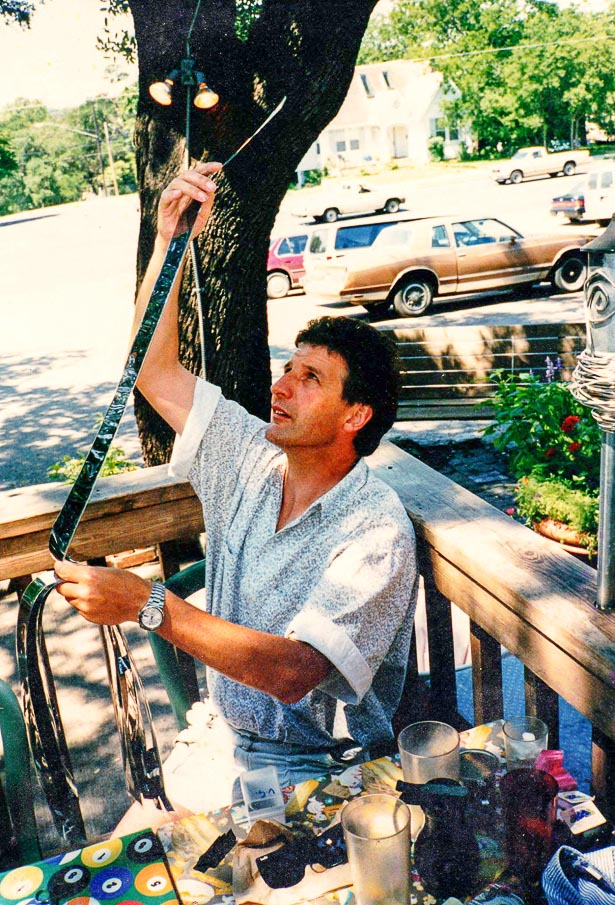
Photo©John Pierce/PhotoSport International UK USA Asia
Who were your inspirations as photographers?
“I had a picture of Mike Hailwood on the Isle of Man in 1967 500cc TT race on my bedroom wall, way before I was into cycling.
“The picture is quite famous, it was printed at the shop where I worked (Husbands Photographic and Bromhead’s Bristol) – it was displayed on the wall there, before I obtained it.
“The print has long gone, but it features in the John Surtees ‘Pirelli’ book ‘Heroes’.
“I gained all my inspiration from the French magazine Miroir du Cyclisme and Miroir des Sports that our club (Bristol Road Club) President Jack Turner used to have delivered. He had the big pictures all around the walls of his basement flat; I can see them all now, like it was last week.
“The problem was that there were no photos in British magazines from France or Belgium; there were a few poor ones of the British riders, and none of the ‘foreign’ winners. No one was there taking them, so my inspiration came from the actual lack of such pictures in the British Press.
“This was recognized by Jacques Goddet, son of the co-founder of the Tour when he awarded the, “médaille de la fidélité” to me in 1987.”
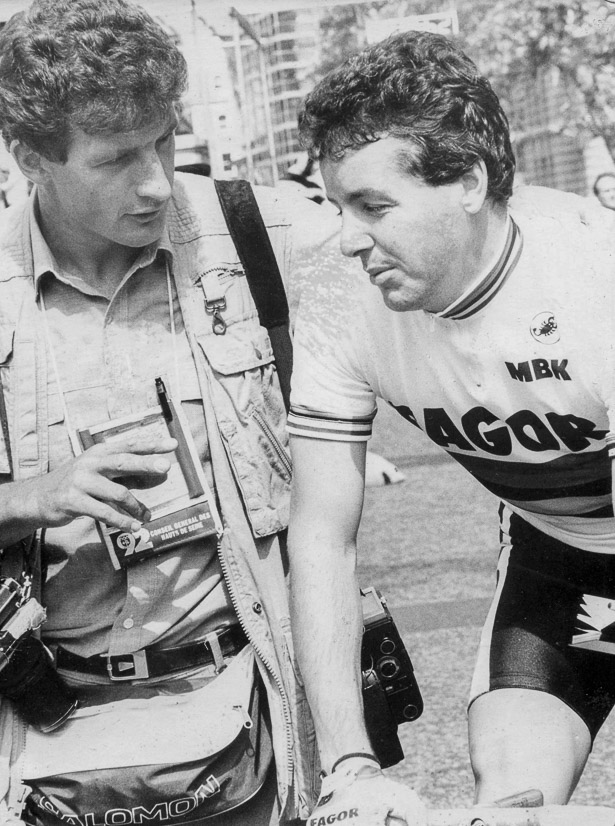
Photo©John Pierce/PhotoSport International UK USA Asia
“‘British photographers shoot football and cricket and Mr Pierce has spread the word of the Tour de France beyond Europe, to the United Kingdom and the United States,’ he spoke for quite a while before making the award for covering 21 Tours de France in 1987, coincidentally the year that my friend Stephen Roche (Ire) won – rather nice, because when I was in Dublin, when Stephen was an amateur, I encouraged him to join the ACBB, Peugeot sponsored club in Paris.”
Look out for Part Two of our interview with John, coming soon!
